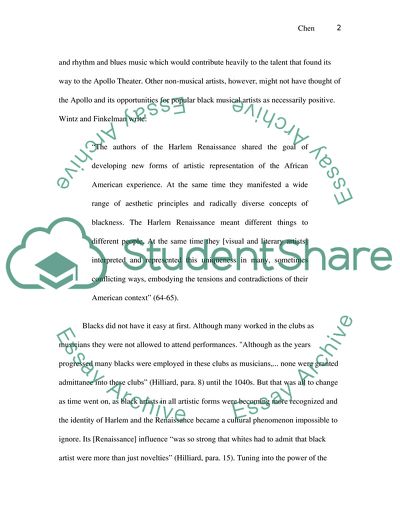Cite this document
(The Apollo Theater: Artistic Pantheon of the Harlem Renaissance Research Paper, n.d.)
The Apollo Theater: Artistic Pantheon of the Harlem Renaissance Research Paper. Retrieved from https://studentshare.org/visual-arts-film-studies/1735683-how-the-apollo-theater-became-the-landmark-of-harlem-renaissance-by-allowing-some-greatest-performers-plays-here
The Apollo Theater: Artistic Pantheon of the Harlem Renaissance Research Paper. Retrieved from https://studentshare.org/visual-arts-film-studies/1735683-how-the-apollo-theater-became-the-landmark-of-harlem-renaissance-by-allowing-some-greatest-performers-plays-here
(The Apollo Theater: Artistic Pantheon of the Harlem Renaissance Research Paper)
The Apollo Theater: Artistic Pantheon of the Harlem Renaissance Research Paper. https://studentshare.org/visual-arts-film-studies/1735683-how-the-apollo-theater-became-the-landmark-of-harlem-renaissance-by-allowing-some-greatest-performers-plays-here.
The Apollo Theater: Artistic Pantheon of the Harlem Renaissance Research Paper. https://studentshare.org/visual-arts-film-studies/1735683-how-the-apollo-theater-became-the-landmark-of-harlem-renaissance-by-allowing-some-greatest-performers-plays-here.
“The Apollo Theater: Artistic Pantheon of the Harlem Renaissance Research Paper”, n.d. https://studentshare.org/visual-arts-film-studies/1735683-how-the-apollo-theater-became-the-landmark-of-harlem-renaissance-by-allowing-some-greatest-performers-plays-here.


